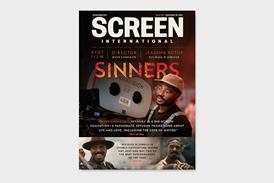How have the Sundance hits of the past few years fared at the global box office?
As Sundance seekers prepare to brave another week in the sub-zero splendour of Park City, thoughts inevitably turn to the commercial prospects of the festival line-up. Over the years some films have gone on to achieve notable success while others have flopped, giving rise to the popular parlour game whereby industry attendees guess how well a festival hit will perform at the box office.
Sundance is a festival, not a distributor showcase. There is no guarantee of commercial theatrical playability and festival director John Cooper repeatedly says this is not at the forefront of programming criteria, though always welcomed. Plus the domestic distribution arena is in a state of flux and many are arguing it is time to stop looking at theatrical performance as the be-all-and-end-all and realise there are new platforms that can offer remuneration.
Sundance today is, more than ever, about discovery and setting the pace for the year ahead in independent cinema. Translating Park City popularity into dollars and cents is notoriously difficult: a film that resonates with the famously exuberant Sundance crowd may not appeal seven months later to an exhausted office worker looking for two hours of escapism on a Friday night. A buyer’s rarified taste may bewilder even the most ardent arthouse supporter. And of course the film’s subject matter may simply fall out of fashion over time. Then again, it can catch a wave.
When JC Chandor’s debut Margin Call premiered in 2011, it was clearly something special. Roadside Attractions and Lionsgate snapped up US rights and by the time the financial thriller, starring Kevin Spacey, came out in a day-and-date theatrical and VoD pattern it resonated with audiences.
“It hit the Zeitgeist well with the Occupy Wall Street movement reaching its peak as we opened in October,” says Roadside Attractions co-founder Howard Cohen. “That made reviewers and feature writers take the film more seriously and be more interested in the subject matter, and to place it more prominently.” Margin Call grossed $5.3m in US theatres and an undisclosed amount on VoD, where it continues to play. Internationally Myriad Pictures has licensed theatrical rights in more than 40 territories.
“The fact that the film was released day-and-date with VoD in the US appears not to have impacted the international releases,” says Myriad chief Kirk D’Amico. “Even in places like Canada, where… Alliance nonetheless provided the film with a proper theatrical release.”
Margin Call has taken more than $6m to date internationally.
‘Margin Call hit the Zeitgeist well, with the Occupy Wall Street movement reaching its peak as we opened in October’
Howard Cohen, Roadside Attractions
Lisa Cholodenko’s 2010 hit The Kids Are All Right is a supreme example of the film-as-survivor story. The project almost fell apart several times but producers Celine Rattray and Jeffrey Levy-Hinte persevered, and Focus Features picked up North American and select territory rights following a bidding war at Sundance. It went on to win a Teddy prize in Berlin, trading on its festival kudos to earn more than $20m in the US — by far its biggest market.
The Ryan Reynolds thriller Buried played in the same year and caused a stir among festival-goers. Yet it completely flopped at the North American box office when Lionsgate chose a muted campaign to release it later in the year. By contrast it has fared well on video and VoD and international audiences responded well when the film opened wide through Universal and independent distributors, grossing around $20m in total.
“In Spain, for example, it was perceived as a thriller with international acclaim; same in the UK, which were the two top territories,” notes Buried’s sales agent Rena Ronson of UTA.
The 2010 festival title Splice, an effective sci-fi drama with Adrien Brody and Sarah Polley, impressed Joel Silver. He bought it through Dark Castle, which has a deal with Warner Bros. The studio got behind a wide release and committed at least $25m in p&a. The result was $17m in North America and, importantly, a strong video and VoD run.
The 2010 crop included indie darling Winter’s Bone, Debra Granik’s gritty Ozark Mountains tale that launched Jennifer Lawrence’s career and went on to gross $6.5m in North America through Roadside Attractions. Cohen calls it “a classic arthouse release” that launched in New York and Los Angeles and expanded over subsequent weeks.
“The one slight deviation from the norm,” Cohen recalls, “is that we opened in theatres in a lot of markets in the general area where the film took place, southwestern Missouri, much earlier than we would have on any other arthouse release. And [it played in] other kind of ‘heartland’ areas that might not have played a film of this type at all. Those markets did extremely well and played throughout the release.”
Among the more notable 2011 acquisitions were the Paul Rudd comedy Our Idiot Brother, which grossed more than $24m in the US through The Weinstein Company, a solid result mitigating what would have been a fairly heavy p&a outlay. Paramount bought Drake Doremus’ Like Crazy and put the full force of its publicity machine behind the film, but it earned a limp $2.9m in North America. Fox Searchlight snapped up the widely admired Martha Marcy May Marlene and generated $2.9m domestically. That is a lot less than the thriller could have expected but what it lacked in grosses it more than made up for in career-building: star Elizabeth Olsen and first-time film-maker Sean Durkin are now on everybody’s radar.
The commercial success or failure of a Sundance hit — or indeed a hit at any festival — is in large part a lottery. It is a tough gig being a buyer at a festival. Buyers can get it right and they can make mistakes, sucked in by a herd mentality that creates inflated expectation around some films and dismisses unfairly the prospects of others.






















No comments yet